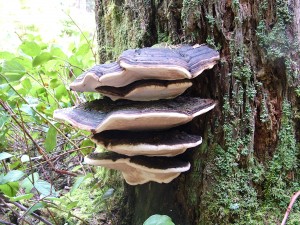
Research suggests some species in the tropics and subtropics may be more resistant to climate change than species closer to the poles. (Credit: SERC)
Getting better data. Understanding anything in the natural world requires good data. For scientists tracking biodiversity, monitoring what species are where can offer crucial information on “natural” levels of biodiversity. Over time, this data can reveal a picture of how fast biodiversity is changing. Combined with well-resolved environmental data (such as weather data), it can also help them discover what’s driving those changes so they can detect early warning signs.
First, the good news – the technology is there. Collecting data isn’t a problem. But there are a few glaring coverage gaps. The tropics and much of the Southern Hemisphere, some of the most biodiverse places on the planet, have limited monitoring sites. Microbial soil communities, which play a crucial role in determining plant survival, have been practically ignored.
- What’s next: Global programs, like the Smithsonian Institution Global Earth Observatories, can help expand coverage to a wider area. In order to find out what’s behind biodiversity changes, researchers need to establish new monitoring sites that target the crucial geographic and ecological gaps. It’s also important to standardize research protocols so data from different institutes can be compared.
Understanding what makes species vulnerable to climate change (or not). Not all species are sensitive to climate, and the ones that are aren’t all sensitive in the same ways. For example, species in high latitudes may be more susceptible to sudden changes than those in the tropics and temperate zones. This makes modeling rather difficult. Most of the climate change-species models right now are either large-scale ones that aren’t very good at predicting the future, or they’re so detailed that they require information that isn’t available.
- What’s next: New modeling methods allow researchers to compare the many different forces that determine where species can live. The tools need some fine-tuning, but if they can be used on large-scale datasets, they could help scientists identify which species are sensitive to climate change and how.
No species is an island. It’s not enough to study individual species as though they never mingle with their neighbors. Unfortunately, trying to map out the complex web of interactions can be quite challenging. Figuring out which species are in the most danger – and which species a community can’t afford to lose – is crucial to grasping the full impact of climate change.
- What’s next: Better data should help with big-picture predictions. Researchers have also gained some insights into which communities are most stable and what makes them stable. Now the trick is to combine those insights with what we already know about species-species interactions to get a more detailed picture of the future.
They’ll adapt? Creatures have been evolving to fit tough conditions for 3.5 billion years, and there’s no reason to think they won’t during the next episode of climate change. In this case, the most likely candidates are short-lived species that reproduce quickly, like bacteria and arthropods, or species in areas undergoing dramatic change. Non-genetic adaptations, such as passerine birds changing their breeding dates in response to climate change, aren’t uncommon either. The challenge for researchers is foreseeing these changes and figuring out how they will affect the ecosystem.
- What’s next: Reanalyze the data that’s already there for patterns in adaptation, both genetic and non-genetic. Then supplement that with new tests on how species respond to specific climate change stresses.
Regroup. When trying to model how plant life is distributed across the globe, scientists tend to sort them into a few very large groups, which makes the calculations easier. However, it also makes them less accurate when it comes to predicting the next several decades. Getting a more realistic picture requires more, smaller groups – which in turn require more data.
- What’s next: Global trait databases such as GLOPNET and TRY can provide the data. The next step for scientists is to start creating smaller, more detailed plant groups that focus on a specific ecological function or a certain aspect of climate change.
-by Kristen Minogue

